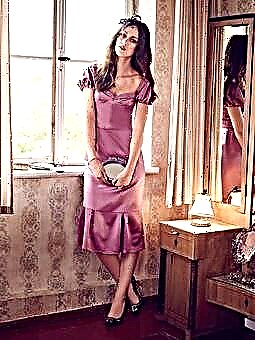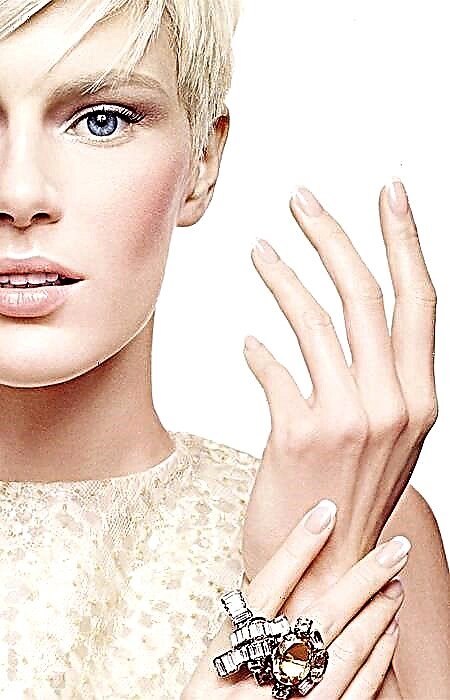If you love nature, you are fascinated by the beauty of plants and flowers, if you like to make herbariums, if you feel a craving for fine art - try yourself in a mistake.
Remember the herbariums we dried for our natural history lessons? The art of creating magnificent paintings is mistaken at its core, similar to compiling such a herbarium. The difference is that from the plants and their details are compiled using the collage method of the image: landscapes, portraits, still lifes, plot paintings, abstract patterns and patterns ...

Photo: @roerichsmuseum
Mistaken: what kind of technique it is and how it appeared

Photo: @krysinaludmila
Mistaken or osibana - a type of floristry that was born in Japan many centuries ago. From Japanese, this word can be translated as "pressed" or "planar floristry." We can say that this is a painting made using plants pre-collected and dried using a special technology.
The mention of the compilation of paintings from dried plants is found in the culture of Ancient Egypt and Judea, China, Korea and Thailand. This mastery reached its greatest development in Japan about six centuries ago.

Photo: @olgakataraga
Then mistaken was considered the art of samurai. Since this lesson requires both a subtle understanding of nature, a developed artistic taste, and the ability to concentrate and be as dexterous as possible as a jeweler, samurai practiced mistaken practice to achieve balance, train attention and accuracy and understand natural harmony.

Photo: @olgakataraga
In the second half of the XIX century, in the Victorian era, this type of needlework became known in the UK, then spread throughout Europe and other continents. Although still mistaken today, it is most common in Japan, but in recent decades, this type of art has become popular throughout the world as a fascinating hobby.
22 rare and unusual types of needlework
Try to do something wrong if ...

Photo: @roerichsmuseum
If you love nature, you are fascinated by the beauty of plants and flowers, if you like to make herbariums, if you feel a craving for fine art - try yourself in a mistake. To master this art, professional artistic skills are not required: the nature that created them will help you to “draw” with leaves, flowers and seeds of plants. The results are impressive, even for beginners.

Photo: @solod_studio
Carving for beginners: learning the art of creating masterpieces from fruits and vegetables
What do you need to get started?

Photo: @marina_khortitskaya
True masters mistakenly use many professional tricks and secrets to prepare material and create their work. On special sites and forums, enthusiasts of this art discuss special instrument configurations and the best days, hours and weather for cutting plants. For greater safety of the finished paintings, they are placed in a sealed frame under glass, from where air is pumped out. You can also plunge into all these secrets if you are seriously carried away by a mistake. For starters, you need very little.

Photo: @romashkacv
First you need to collect the material. It can be whole plants, their leaves, flowers, seeds and seeds, stems, ears, poplar fluff, bark and other tree bark - there are many options. Pros recommend collecting material in dry weather. Then the material must be dried by placing it in a special herbaric mesh or between sheets of paper under the press. Then it’s up to the idea and sketch of the future image - it can be applied with a pencil on paper or fabric. Finally, using tweezers and glue (for example, PVA), the picture is "drawn" by dried plants and their details.Leaves turn into silhouettes of mountains and crowns of trees, fluff becomes clouds and snow, stems allow you to "draw" straight lines, seeds and flower petals - to create textured surfaces ...
How to sew silk flowers and decorate clothes with them
How to make monograms of plants and flowers in the technique is mistaken: a master class

A simple but effective gift or interior decoration for your own home is a picture of leaves and flowers.
You will need:
- plants and flowers for drying;
- sheets of paper and thick books for drying;
- scissors or a small pruner;
- PVA glue and brush;
- photo frame and paper base for work.
Work sequence:
1. We collect, cut, dry plants.
2. We come up with a sketch, lay out the plants.
3. Glue the plants to the paper, dry the work and insert into the frame.
Ideas for inspiration:

Photo: thehousethatlarsbuilt.com

Photo: craftgetideas.com

Photo: tattooedmartha.com

Photo: counter-peak.com

Photo: steemitimages.com

Photo: @studio_helgiis

Photo: @studio_helgiis

Photo: @olgakataraga

Photo: @olgakataraga

Photo: @olgakataraga

Photo: @roslynka_art

Photo: @roslynka_art

Photo: @handmade_diy_bishkek

Photo: @krysinaludmila

Photo: @alekuwka

Photo: @fairy_celebration

Photo: @fairy_celebration

Photo: @azalijart
Preview photo: designsponge.com



